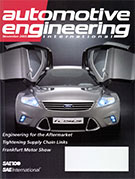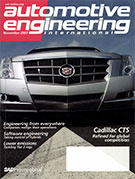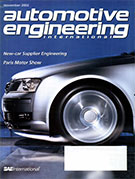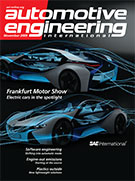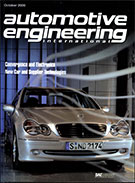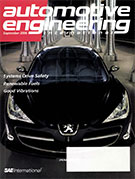Magazine

Autonomous Vehicle Engineering: May 2019
2019-05-02
Editorial AVs, data and 'surveillance capitalism' SAE AV Activities SAE launches Office of Automation The Navigator Lessons from the 737 Max-8 debacle Scorecard Waymo, GM and Ford pegged as autonomous leaders Designs to Dye for: Autonomy's New-Materials Revolution From pineapples to bacteria, Envisage's research is focused on new-mobility's 'inside' story. Dining on Data Processing, in real-time, the enormous data stream that's flowing through AVs is increasingly the job of NVIDIA's mighty GPUs. Danny Shapiro relishes the feast. New Performance Metrics for Lidar Frame-rate measurement is so yesterday.








